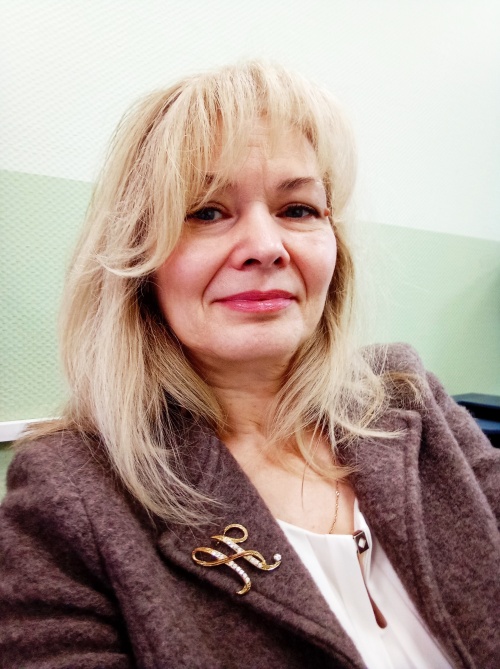Meshkova, N.V.

Cand. Sci. (Psychology)
Associate Professor, the Department of Theoretical Foundations of Social Psychology, the Faculty of Social Psychology, Moscow State University of Psychology and Education.
-
Malevolent Creativity and Personal Features of Young People in Different Socio-Political Conditions: Relationship and InteractionLomonosov Psychology Journal, 2024, 1. p. 88-105read more1947
-
Background. The relevance of the study is associated with the activation of malevolent creativity at the macro level in the form of information wars and isolation of Russia, which create threatening socio-political conditions, against the background of the special military operation in Ukraine.
Objectives. Objective of the study was to find out whether there are differences at the micro-level in different socio-political conditions in malevolent creativity as well as to identify its connections with personal characteristics: hostility, the trait of “Agreeableness”, and moral identity. The following hypotheses were formulated: 1. The level of antisocial creativity varies in different contexts and will be higher in threatening socio-political conditions and 2. the relationship between such personal characteristics as hostility, Agreeableness, moral identity, and malevolent creativity will be different in different socio-political conditions.
Study Participants. The study is a cross-sectional one. The first stage was carried out in 2019 with the participation of 81 young students from one of Moscow universities (mean age 19.2, SD = 1.2). 152 young students of the same Moscow university took part at the second stage in 2023 (mean age 19.1, SD = 1.29).
Methods. Participants filled out forms with the questionnaires “NEO-FFI” (a shortened version of the questionnaire “NEO PI-R”), BRAQ-24, moral identity questionnaire, “Behavioral features of antisocial creativity”.
Results. It is shown that there are differences in variables at the microsystem level in different sociopolitical conditions: MC and hostility are significantly lower, and moral identity and cooperation are significantly higher in the sample of 2023. The predictors of MC in the sample of 2023 were the traits of Agreeableness and hostility. In the sample of 2019, the trait of Agreeableness alone predicted MC. Differences in the strength of the relationship between the variables were revealed: in the sample of 2023, the relationship of hostility with antisocial creativity and the trait of Cooperation was significantly stronger than in the sample of 2019.
Conclusions. In threatening socio-political conditions, young people with high hostility and low level on the “Agreeableness” trait fall into the risk group, due to the high probability of the realization of creativity in behavior that harms other people, while realization of MC in behavior may be restrained through actualizing moral identity. In a calm and peaceful period, moral identity and hostility are less relevant for the implementation of MC in harmful behavior, since the development of “Agreeableness” is important in this case.
Keywords: social context; malevolent creativity; behavior; moral identity; trait; Agreeableness; hostility DOI: 10.11621/LPJ-24-04
-
-
Self-esteem and types of creativity in adolescents: relationship and predictorsLomonosov Psychology Journal, 2020, 2. p. 45-61read more4409
-
We present the results of an empirical study of the relationship between self-assessment of creative abilities, originality of creativity (verbal and social) and values. The relevance of the research is related to the demand for creativity as an important competence in the labor market. The ambiguity of the relationship between different types of creativity and self-assessment of creativity, as well as the discrepancy between the results of diagnostics of creative potential using various methods, actualizes the problem of realizing creative potential.
The aim of the work was to study the relationship between different types of creativity, self-assessment of creativity and values, as well as to identify the ratio of creativity indicators diagnosed using the Real Word Divergent Task (RWDT) method and tasks for verbal creativity.
The study involved adolescents aged 15–16 years (N = 50; 26 – men) – students of one of Moscow school. The following methods were used: “Self-assessment of creative abilities” (E. Tunik), tasks on verbal creativity and creativity in social interaction of positive and negative connotations of RWDT, Portrait value questionnaire of Sh. Schwartz.
According to the results, originality is higher in tasks for verbal creativity compared to situations in social interaction; originality in situations of lies and prosocial situations in social interaction significantly correlate; there is no correlation between self-esteem of imagination and creativity indicators measured using the RWDT method and tasks for verbal creativity; self-esteem of creative abilities has a positive relationship with the highest value of “Openness to change”; the predictor of self-esteem of imagination is the value of “Independence of thought”. The results confirmed the hypotheses about specificity of creativity, about the absence of a link between creativity measured as self-report and objective methods; about the presence of a direct link between the highest values of “Openness to change” and the components of creativity measured by self-report, and did not confirm assumption about the absence of a direct link between originality in prosocial situations and situations with negative connotations.
Conclusions are made that 1) creativity is specific in various areas, 2) creativity in situations of lies and prosocial situations in social interaction is a single construct; 3) self-esteem of imagination is not associated with divergent thinking, measured using the RWDT method and tasks for verbal creativity; 4) high self-esteem of imagination is mediated by the motivational goal of thinking creatively, having original ideas, learning new things and phenomena.
Keywords: creativity; self-assessment of creativity; imagination; values; diagnostics of creativity; Real Word Divergent Task DOI: 10.11621/vsp.2020.02.03
-









